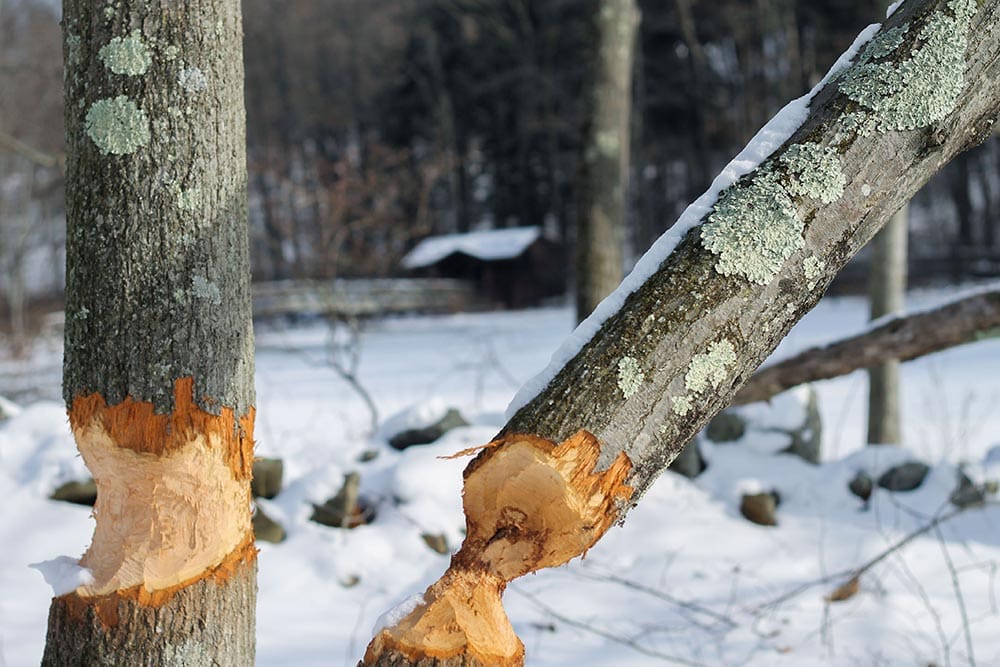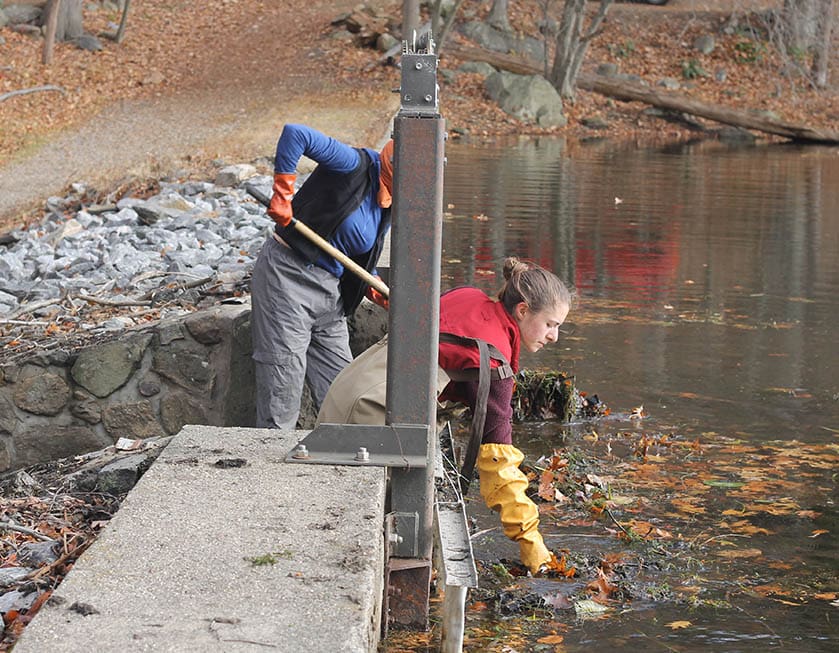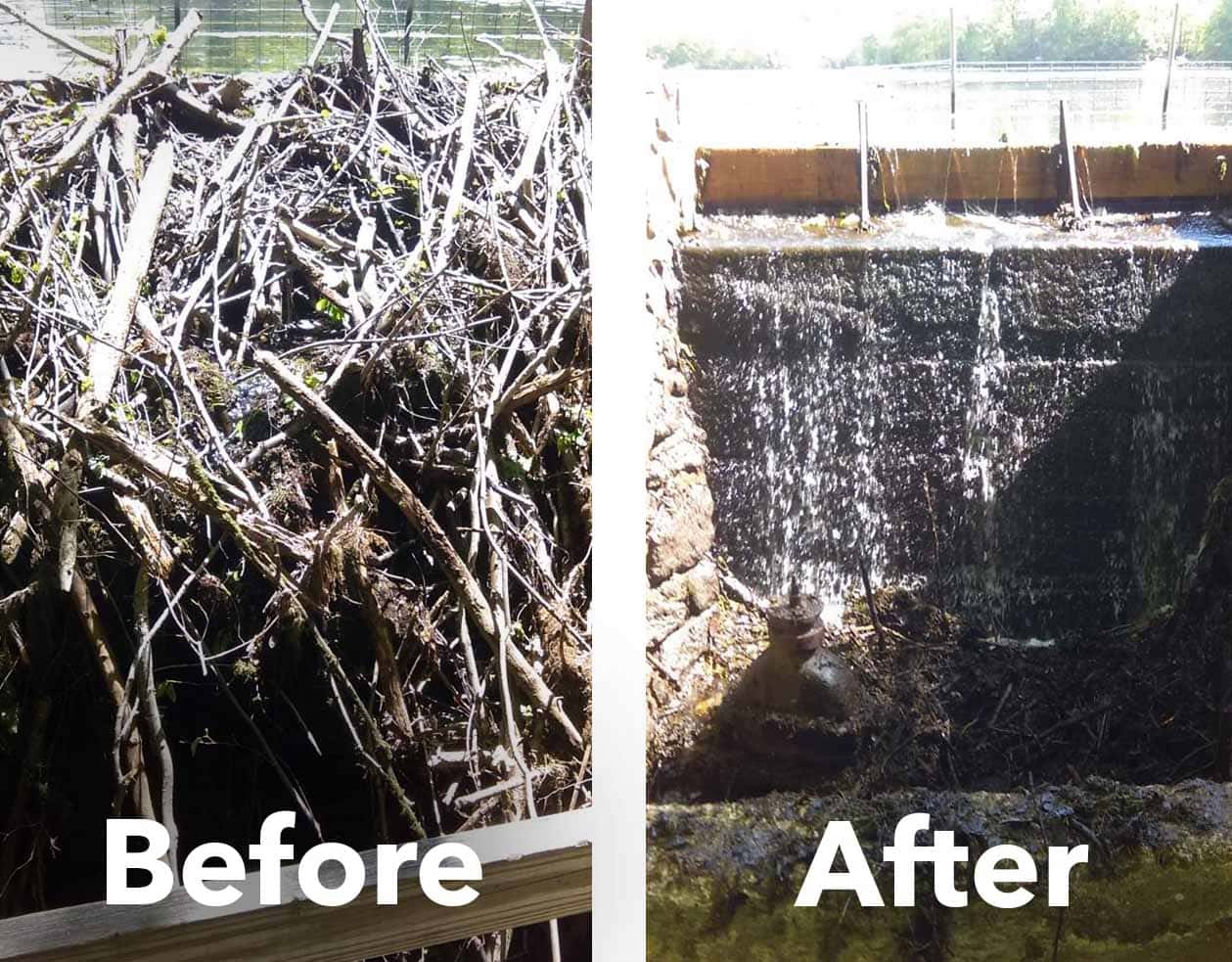Beaver Management

The return of beaver (Castor canadensis) to Teatown is an appropriate bookend to a remarkable wildlife success story. Across New York State, beaver were brought to the brink of extinction following nearly two centuries of long, unregulated trapping seasons that fueled the European fur trade. Beaver pelts were highly valued, and North American beaver were the source of hundreds of thousands of pelts to Europe during North America’s western expansion. Since the beaver’s return to Teatown in 2013, Teatown’s beaver population has grown steadily resulting in multiple colonies on the property.
Beaver are North America’s largest rodent, and they are true “ecosystem engineers.” They engineer their own habitat by building dams from mud, sticks, and tree limbs to create a pond, and within that pond they construct their lodge. These ponds are also called wetlands, which are some of the most productive and biodiverse places in the world. Wetlands provide habitat for waterfowl and other mammals, and also reduce downstream flooding while bio-retaining pollutants from stormwater runoff.
Despite their ecological benefits, beaver can also cause significant financial damage by flooding roadways and damaging trees and shrubs. Beaver eat woody plants; including leaves, twigs, and bark of trees they fell around their pond. They can clear large sections of forest vegetation seemingly overnight, and because a beaver’s damming behavior is triggered by the sound of running water, they often clog man-made drainage structures like culverts and dam outlets.
Teatown has established many education programs related to beaver and their return, and visitors can enjoy seeing them move around the lakes at dawn or dusk. Though we are excited by the return of the beaver, they have brought some unique challenges to Teatown. Beaver regularly clog the spillways of Teatown’s lakes, and staff must regularly monitor and clear those spillways of beaver debris to keep our dams in safe, working order. Around the Lakeside trail, beaver have damaged or removed 10-15% of the trees and shrubs; this damage sometimes leave hazard trees along the trail corridor that staff must remove. Goose Island, which is entirely unprotected from beaver damage, has been about 80% deforested.
Wildflower Island has also sustained beaver damage. Wildflower Island is ecologically unlike any other place on the preserve. It serves a refuge for rare and unique plants while representing what a healthy, multi-layered forest should look like. There are no deer or invasive plants on the island because it is isolated, making it home to rare lady-slipper orchids, trilliums, and other wildflowers that bloom in spring and summer. Teatown’s stewardship mission is to conserve the biodiversity of our land and create an environment for exceptional educational opportunities, and protecting Wildflower Island is a part of that mission.
Teatown employs an adaptive management strategy for beaver that may include lethal management if there are negative ecological impacts to the preserve, or when the species in question threatens Teatown’s assets (e.g., buildings, trails/trail structures) or human health. These considerations also guide our adaptive management strategy for deer. If staff and visitor safety concerns from hazard trees and spillway debris become unmanageable, Teatown will selectively remove the Teatown Lake beaver population as part of an adaptive management strategy for beaver.
Additional information from the NYSDEC on beaver management can be found here: https://www.dec.ny.gov/animals/6992.html.



